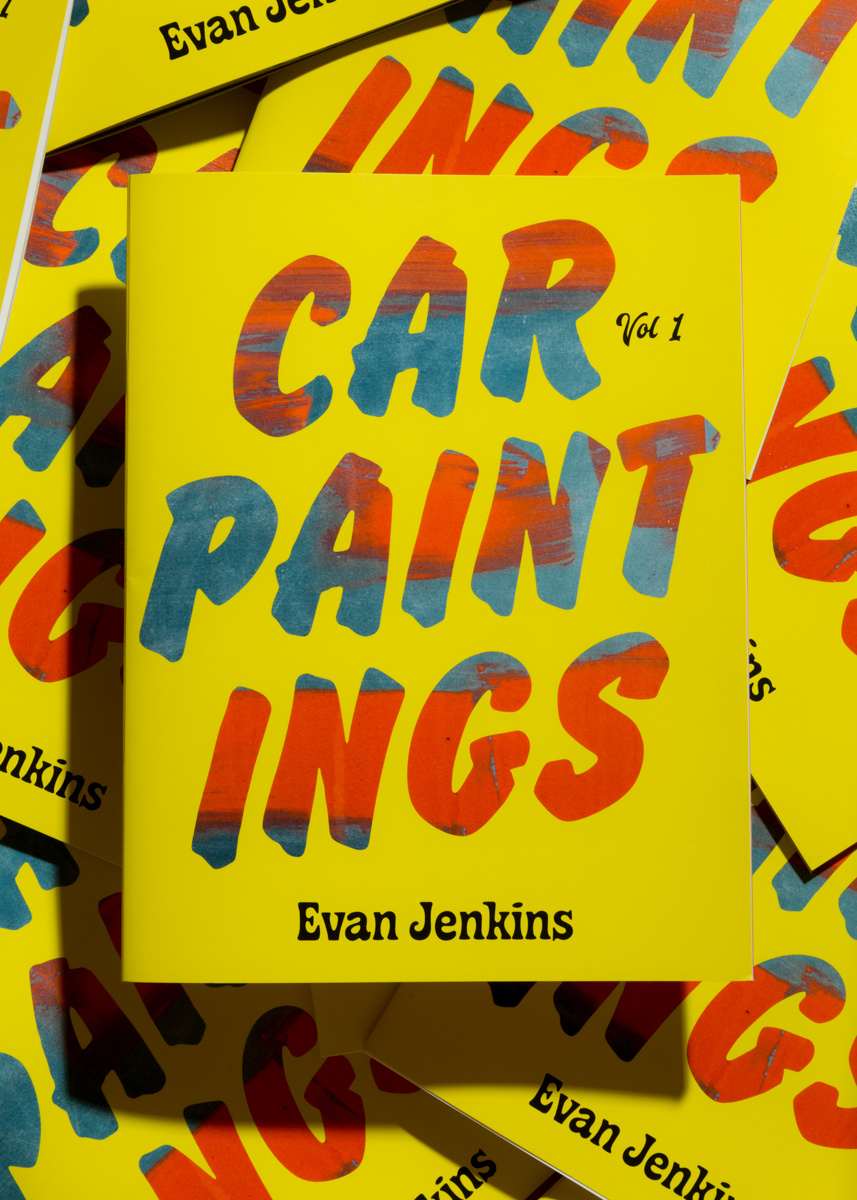kate sierzputowski
Car Paintings Vol 1 Intro:
Speckled, scraped, and slashed: Industrial paint colors blend with evidence of previous collisions, a history mapped square on the edge of a cracked fender. Dings merge with outdated aesthetics, making it difficult to distinguish whether a thick rust or painted pattern ages the car more. Photographed up close, Evan Jenkins captures these abstract moments three-dimensionally scored into vehicles across Chicago (his home), and Southern California (where he once lived), displaying subtle hints that the photographs are in fact of automobiles through the slip of a hub, handle, or crumbling tail light.
Jenkins started the project casually in 2013, using his camera to capture intriguing vehicles in the midst of other photographic assignments and excursions. The urge to photograph cars began in his childhood however, far before his current practice was forged. Growing up, Jenkins built models of hot rods and later frequented muscle car rallies—ritual events in his sunbaked hometown of Ventura, California. Using disposable cameras, Jenkins lovingly made amateur photographs of these car shows. His current process has since evolved to rely on digital technology, permitting a perpetual cycle of shooting, editing and reviewing.
Wholly the series employs a repetitive photographic approach as seen historically in Ed Ruscha’s Parking Lots, or in the chemically-altered, recent work of James Welling. However, when taken individually the pieces formally recall Abstract Expressionism, with muted color fields evoking the paintings of Mark Rothko or Robert Motherwell. Additive and subtractive processes are also noted in the captured vehicles’ ongoing deterioration and repair, bringing to mind the practices of Leon Golub or Mark Bradford.
Jenkins’ images consist of thoughtfully composed details, yet his youth spent as a car culture geek informs his instinctual attraction to the overall form of the “Classic Car” itself. At first only aiming to capture painterly gestures, he has since expanded upon these rules to incorporate multiple compositional elements, including snow-covered windshields and the buckled steel of a door panel.
By photographing these selective areas Jenkins gives the audience a peek into the vehicle’s multi-faceted history. The zeitgeists of changing decades are showcased via trace elements of automotive design, customizations and repairs made by previous owners, and the environmental effects of the vehicles’ various locations. Compiled as an abstract discovery, each found “painting” is presented as a plane of scratches and fumbles, colors touched-up and buffed out through the years. When thoughtfully focused, this combination of wear and tear transforms lemons into fine art.

